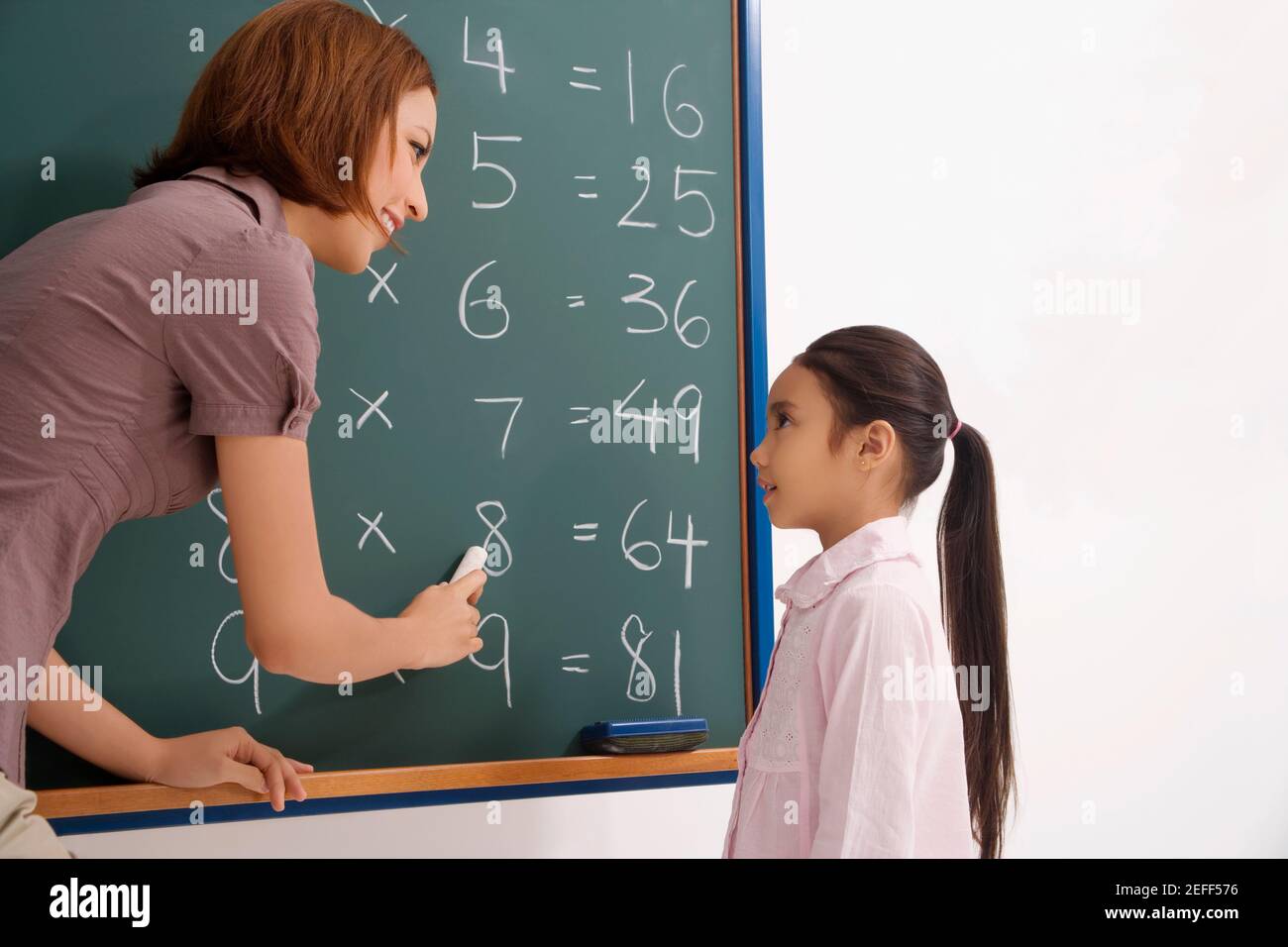The Best Primary Science Tuition Singapore for Effective Learning Methods
The Best Primary Science Tuition Singapore for Effective Learning Methods
Blog Article
A Comprehensive Guide to the Various Discovering Approaches in Main Science Direction
The exploration of diverse learning approaches in main science guideline offers a chance for educators to improve trainee engagement and understanding considerably. By taking a look at hands-on learning methods, inquiry-based strategies, and collective approaches, we can identify efficient techniques that satisfy different discovering designs. In addition, the integration of technology and set apart instruction plays an essential duty in cultivating a comprehensive setting. The question stays: exactly how can these techniques be properly implemented in the classroom to maximize their effect? The answer hinges on a more detailed evaluation of each method and its implications for mentor science.

Hands-On Knowing Strategies
Hands-on learning methods play a critical duty in main scientific research direction, involving students in energetic exploration and experimentation. These methods allow students to engage directly with materials and sensations, fostering a much deeper understanding of scientific principles. By utilizing manipulatives, designs, and real-life experiments, teachers produce an environment where trainees can observe, hypothesize, and check their ideas.
Such techniques not only enhance understanding however likewise cultivate important thinking and analytic abilities. When pupils take part in tasks like building simple makers, planting seeds, or carrying out chemical responses, they are encouraged to ask inquiries and seek answers with their very own monitorings. This experiential strategy helps to debunk complex scientific concepts, making them much more easily accessible and relatable.
Furthermore, hands-on understanding advertises collaboration amongst peers, as pupils usually operate in teams to carry out experiments or share searchings for. This synergy not just enriches their understanding experience however also establishes necessary social abilities. Eventually, incorporating hands-on techniques in key scientific research direction fosters a lifelong love of learning and interest regarding the natural world, laying a solid structure for future academic quests in scientific research and beyond.
Inquiry-Based Understanding
Inquiry-based discovering is an educational strategy that motivates pupils to ask concerns, check out phenomena, and build their own understanding of clinical principles. This approach moves the emphasis from traditional teacher-led guideline to an extra student-centered experience, where students take the effort in their instructional journey. By cultivating curiosity, inquiry-based discovering advertises deeper engagement with the material, permitting trainees to discover topics in a meaningful context.
In method, this strategy typically involves hands-on experiments, observations, and vital reasoning activities that straighten closely with the scientific technique. Students are urged to create theories, style investigations, and examine data, which grows important abilities such as analytical and logical thinking. The function of the instructor in this structure is to help with exploration, guiding trainees through the query procedure while encouraging independent idea and cooperation.
Additionally, inquiry-based discovering nurtures a feeling of possession over the understanding procedure, inspiring trainees to pursue expertise actively. This method not only improves understanding of clinical concepts but additionally promotes a long-lasting love for knowing, outfitting students with the abilities needed to navigate a progressively complicated world.
Collaborative Learning Approaches
Collective understanding techniques encourage pupils to take part in purposeful interactions with peers, fostering a common duty for their instructional end results. In key science instruction, these methods motivate learners to collaborate to check out clinical principles, fix issues, and conduct experiments (primary science tuition Singapore). By taking part in team activities, pupils can take advantage of diverse viewpoints, permitting richer understanding and retention of scientific expertise
One trick facet of joint understanding is the focus on communication skills. Pupils must articulate their ideas, pay attention proactively to others, and negotiate ideas, all of which are important expertises in both academic and real-world contexts. This social interaction important link not just boosts their understanding of scientific principles but also promotes teamwork and conflict resolution skills.
When trainees see the value of their contributions within a team, they are much go more most likely to take possession of their knowing trip. On the whole, including joint discovering methods in main science guideline cultivates a dynamic knowing environment that prepares pupils for future academic and social difficulties.
Technology Assimilation in Science
The combination of innovation in key scientific research guideline improves discovering experiences by offering ingenious devices and sources that support various mentor approaches, including collective understanding - primary science tuition Singapore. Using digital systems, simulations, and interactive applications allows trainees to engage deeply with scientific concepts, helping with a much more hands-on technique to discovering
Digital research laboratories, for instance, enable students to perform experiments securely and efficiently, promoting inquiry-based understanding. These devices can replicate real-world clinical scenarios, allowing trainees to visualize complex processes that would be tough to reproduce in a conventional classroom setup. Modern technology cultivates communication and cooperation amongst pupils, as they can share searchings for and work together on projects through online platforms.
Furthermore, multimedia presentations and academic video clips can improve lessons by accommodating varied knowing designs, making abstract principles more available. Data analysis tools likewise encourage students to gather and translate clinical data, strengthening important thinking skills. In general, the tactical unification of modern technology in main science instruction not only improves interaction however also prepares pupils for a highly innovative culture, equipping them with essential skills for future scientific undertakings.
Separated Instruction Approaches
Differentiated direction methods are essential for attending to the varied demands of students in key science education and learning. These methods enable educators to customize their teaching methods to fit differing capabilities, passions, and discovering styles within the classroom. By utilizing distinguished direction, educators can produce a comprehensive environment that cultivates engagement and boosts understanding of scientific concepts.
One efficient technique is to use flexible grouping, which enables pupils to team up with peers at similar skill levels or with varying viewpoints. This technique motivates peer knowing and advertises important thinking. In addition, providing selections in projects can encourage students, enabling them to choose jobs that reverberate with their rate of interests while still fulfilling curricular objectives.
Furthermore, incorporating tiered projects is another useful technique. By creating jobs with differing degrees of complexity, instructors can make certain that all students are appropriately challenged, no matter their proficiency. Using formative assessments to evaluate recognizing further allows instructors to readjust their training approaches dynamically, making sure that each student obtains the assistance they require.
Eventually, implementing differentiated guideline strategies in main scientific research education and learning not just boosts pupil go to this web-site discovering results yet additionally cultivates an enthusiasm for scientific research, preparing trainees for future academic quests.

Final Thought
In recap, efficient key scientific research instruction necessitates a complex strategy that encompasses hands-on knowing, inquiry-based techniques, and joint methods. The assimilation of modern technology and differentiated instruction better caters to diverse knowing designs, fostering an environment conducive to expedition and important thinking. By executing these approaches, instructors can improve student interaction and comprehension, ultimately supporting a lifelong passion for science and query. Such extensive approaches are crucial for establishing notified and curious future scientists.
The expedition of diverse learning techniques in main scientific research instruction provides a possibility for teachers to improve trainee engagement and understanding considerably.Hands-on discovering methods play an essential function in key scientific research guideline, involving pupils in energetic expedition and trial and error.Inquiry-based understanding is an educational technique that urges trainees to ask inquiries, explore phenomena, and construct their very own understanding of clinical ideas.Collective learning strategies equip trainees to involve in significant interactions with peers, fostering a common duty for their educational end results. Generally, integrating joint learning methods in primary scientific research instruction grows a dynamic learning setting that prepares trainees for future academic and social obstacles.
Report this page